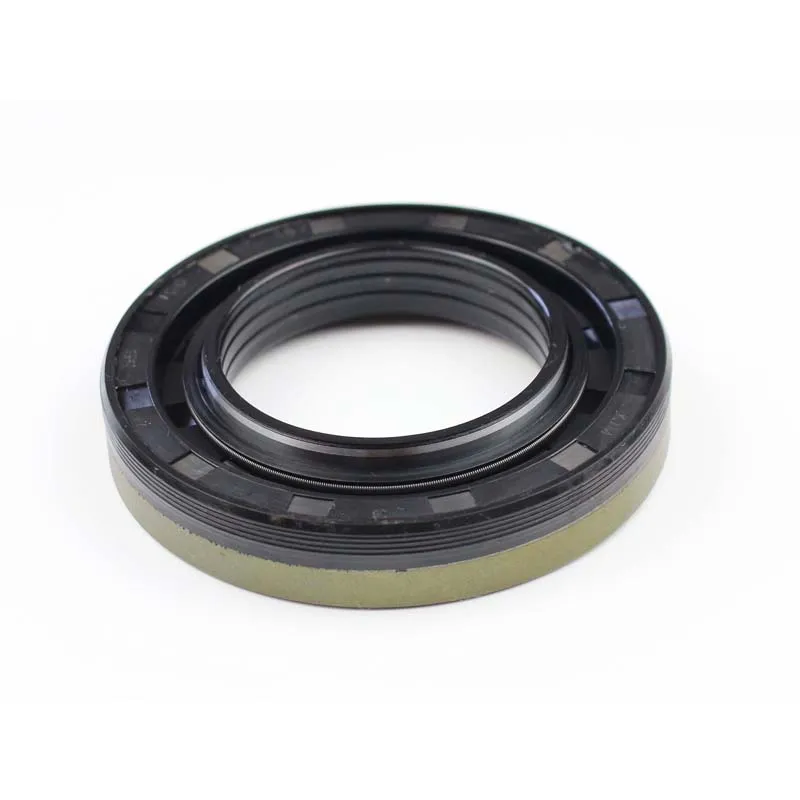rear diff pinion seal
Understanding Rear Differential Pinion Seal Functions, Importance, and Maintenance
The rear differential pinion seal is a critical component of a vehicle's drivetrain system, responsible for protecting the rear differential from dirt, debris, and fluids. Understanding its functions, importance, and the necessary maintenance practices can significantly enhance the longevity of your vehicle's performance.
What is the Rear Differential Pinion Seal?
The rear differential, often found in rear-wheel or four-wheel drive vehicles, is responsible for distributing power from the engine to the wheels. The pinion gear interacts with the ring gear, allowing the wheels to turn at different speeds, particularly during turns. The pinion seal is located at the point where the pinion gear enters the differential housing. It serves as a barrier to prevent the escape of lubricating oil and the ingress of contaminants.
Functions of the Rear Differential Pinion Seal
1. Fluid Retention The primary function of the pinion seal is to retain the gear oil within the differential. Proper lubrication is critical for the smooth operation of the gears, reducing friction and preventing overheating.
2. Contaminant Exclusion The seal prevents dirt, water, and other contaminants from entering the differential. Water intrusion can lead to severe corrosion and damage to internal components.
3. Pressure Management The pinion seal also helps manage pressure within the differential. As the gears rotate, they generate heat and can create pressure changes. The seal ensures that these changes do not lead to leaks.
Importance of a Functional Pinion Seal
A properly functioning rear differential pinion seal is essential for several reasons
- Prevention of Gear Damage Without the seal, the lubricant can leak out, leading to insufficient lubrication. This can cause wear and tear on the differential gears, leading to costly repairs.
- Avoidance of Fluid Leaks Fluid leaks can be a tell-tale sign of a malfunctioning pinion seal. If left unaddressed, leaks can lead to bigger issues within the drivetrain and contribute to road hazards.
rear diff pinion seal

- Cost-Efficiency Various components in the rear differential are interdependent. A simple issue like a damaged pinion seal can lead to extensive repairs, pushing up maintenance costs.
Signs of a Failing Pinion Seal
Being attentive to warning signs can help in the timely detection of issues related to the rear differential pinion seal. Common indicators include
- Fluid Leaks The most obvious sign is the presence of differential fluid pooling under the vehicle. This oil is typically a thick reddish or brown color.
- Unusual Noise If you start hearing grinding or whining noises from the rear differential, it could signify that the gears are not properly lubricated due to a leaking seal.
- Vibration Excessive vibration while driving may indicate that the differential's internal components are wearing down because of inadequate lubrication.
Maintenance Practices
To ensure the longevity of the rear differential pinion seal and the entire differential system, regular maintenance is crucial
1. Routine Inspection Regularly check fluid levels and inspect for leaks. Catching a problem early can save you from more expensive repairs down the line.
2. Fluid Changes Follow your vehicle manufacturer's recommendations for changing differential fluids. Fresh lubricant helps prolong the life of the seal and the differential.
3. Professional Checks During routine service or when you notice any unusual signs, have a qualified technician inspect the differential, including the pinion seal.
In conclusion, the rear differential pinion seal may be a small component, but its role is vital for the proper functioning of your vehicle's drivetrain. Understanding its functions, recognizing the signs of failure, and committing to regular maintenance can ensure a smooth and efficient driving experience for years to come.
-
Understanding the Front Main Engine Seal: Purpose, Maintenance, and Installation
News Jul.29,2025
-
Understanding O-Rings and Seal Rings: Types, Applications, and Custom Solutions
News Jul.29,2025
-
Understanding Crankshaft Oil Seals: Rear Seals, Pulley Seals, and Their Role in Engine Integrity
News Jul.29,2025
-
The Importance of Front and Rear Crankshaft Seals in Engine Performance and Oil Management
News Jul.29,2025
-
Crank Oil Seals: Functions, Types, and Cost Considerations in Engine Maintenance
News Jul.29,2025
-
A Comprehensive Guide to O-Rings and Seals: Types, Materials, and Global Applications
News Jul.29,2025
-
Mastering Diesel and Performance Engine Maintenance: A Guide to Critical Oil Gaskets
News Jul.28,2025
Products categories















